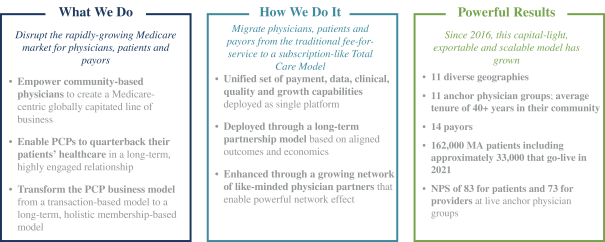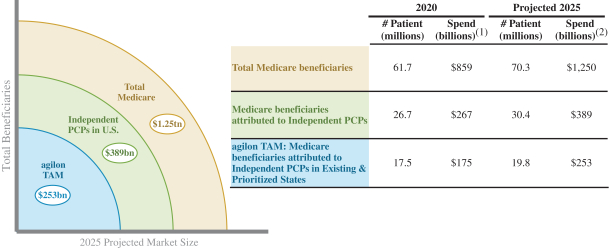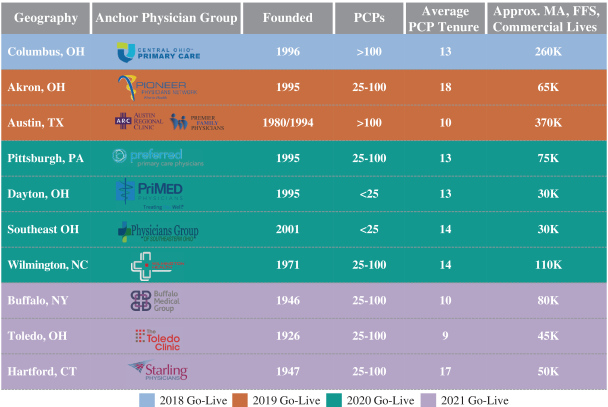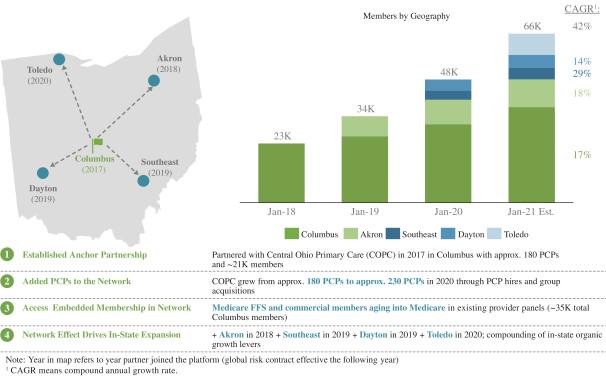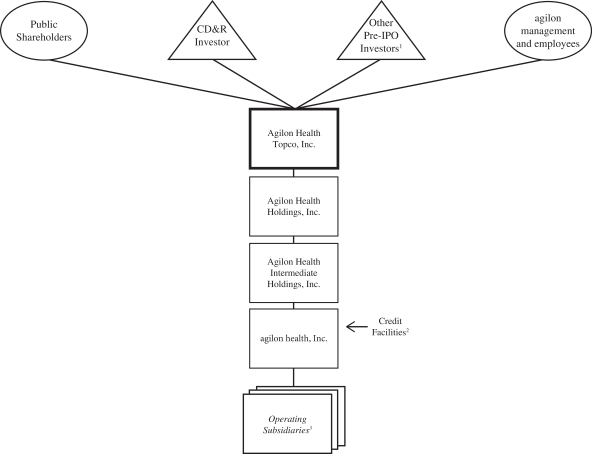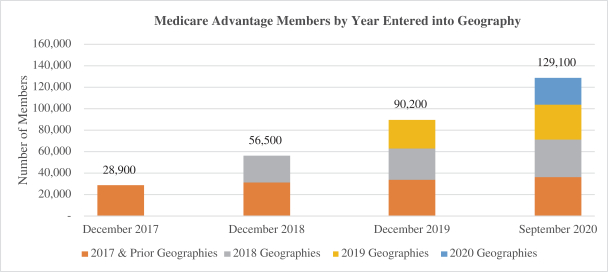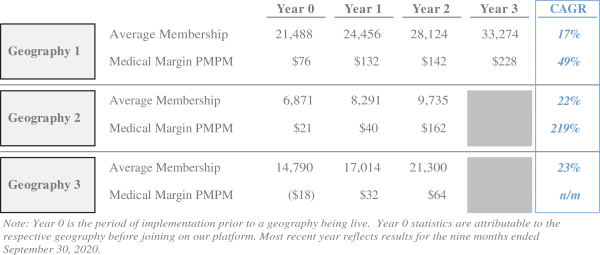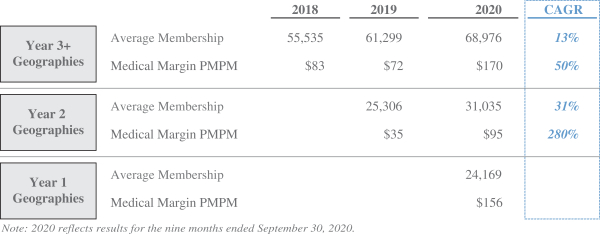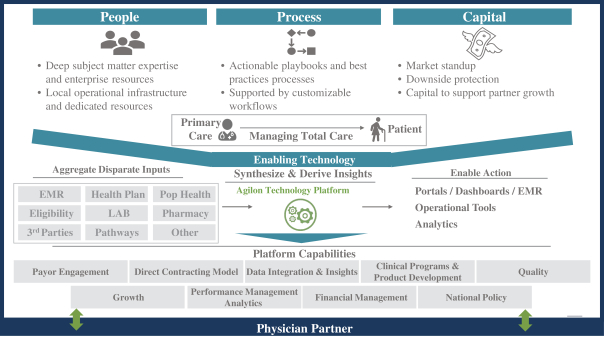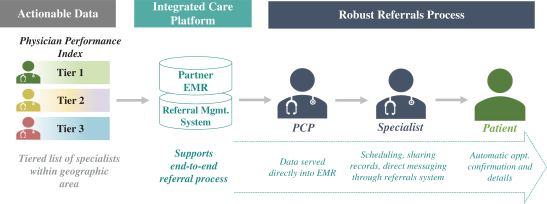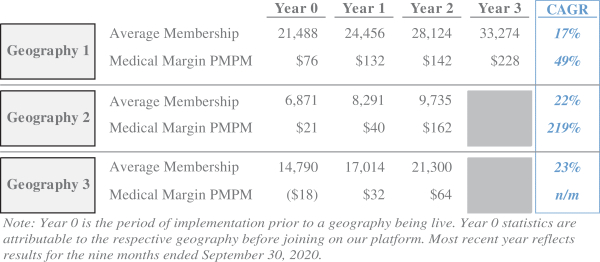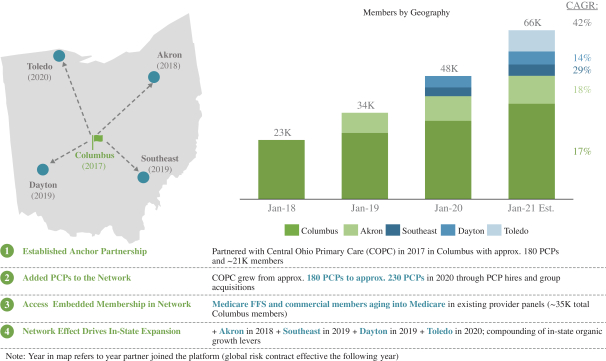There are sometimes wide variations in the established reimbursement rates per member as a result of, among other things, members’ risk status, acuity levels and age, plan benefit design and geography. As the composition of our membership base changes, due to programmatic, competitive, regulatory, benefit design, economic or other changes, there is a corresponding change to our premium revenue, costs and margins, which could have a material adverse effect on our business, financial condition, cash flows and results of operations.
Furthermore, changes to Medicare or MA, such as if CMS were to scale back these programs or discontinue MA, could have a significant adverse impact on our membership levels, revenue and financial results. Changes in individual plan dynamics, such as changes in benefits provided by the payors, premiums charged by the payors or our payors’ STAR ratings, could also adversely impact us.
Uncertain or adverse economic conditions, including a downturn or decrease in government expenditures, could have a material adverse effect on our business, financial condition, cash flows and results of operations.
Historically, government budget limitations have resulted in reduced spending. The existing federal deficit and continued deficit spending by the federal government and significant economic pressure on state budgets have the potential to lead to reduced government expenditures, including for government-funded programs in which we participate such as Medicare. Any sustained failure to identify and respond to these trends could have a material adverse effect on our business, financial condition, cash flows and results of operations.
Unfavorable economic conditions could also impact enrollment in MA plans with our payors, cause our payors to change the benefits structure that is offered to our members or weaken our ability to raise additional capital on acceptable terms. For example, unfavorable economic conditions could cause our payors to reduce the benefits that are offered to our members and could result in the cancellation by certain members of our payors’ products and services, which would reduce our overall membership, premiums and fee revenues. Any reduction in membership, premiums or fee revenues would, in turn, adversely affect the financial position of physician practice groups.
We operate in a competitive industry, and if we are not able to compete effectively, our business, financial condition, cash flows and results of operations will be harmed.
Our industry is competitive and we expect it to attract increased competition, which could make it difficult for us to succeed. We currently face competition in various aspects of our business, including in offering a favorable reimbursement structure for physician partners and potential physician partners and attracting payors and physician partners who are not contracted with us, from a range of companies that provide a Total Care Model under different care models that could attract patients, providers and payors, including hospitals, managed service organizations and provider networks and data analysis consultants. Further, individual physicians who are contracted within our network may affiliate with our competitors. Competition from hospitals, managed service organizations and provider networks and data analysis consultants, payors and other parties could result in payors changing the benefit structure that is offered to our members, which could negatively impact our profitability and market share.
Our primary competitors include ChenMed, Oak Street Health, Optum and VillageMD, in addition to numerous local provider networks, hospitals and health systems. Moreover, large, well-financed payors have in some cases developed their own managed services tools and may provide these services to their physicians and patients at discounted prices, or may seek to expand their relationships with additional competing physicians or physician networks, including in geographic areas we serve. This may result in a more competitive environment and increased challenges to grow at the rates we have projected. We expect that competition will continue to increase as a result of consolidation in the healthcare industry and increased demand for a Total Care Model.
Some of our competitors may have greater name recognition, particularly in local geographies, longer operating histories, superior products or services and significantly greater resources than we do. Further, our
39

